
views
Calculating Absolute Error
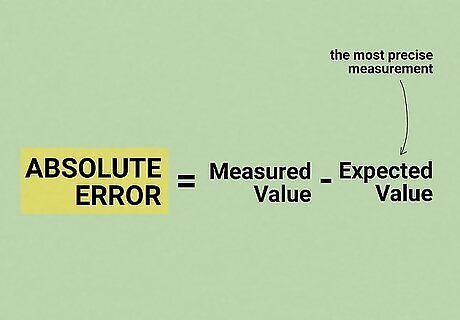
When given an expected value, subtract the value you got from the expected value to get the Absolute Error. An expected value is usually found on tests and school labs. Basically, this is the most precise, common measurement to come up with, usually for common equations or reactions. You can compare your own results to get Absolute Error, which measures how far off you were from the expected results. To do so, simply subtract the measured value from the expected one. Even if the result is negative, make it positive. This is your absolute error! Example: You want to know how accurately you estimate distances by pacing them off. You pace from one tree to another and estimate that they're 18 feet apart. This is the experimental value. Then you come back with a long measuring tape to measure the exact distance, finding out that the trees are in fact 20 feet (6 meters) apart. That is the "real" value. Your absolute error is 20 - 18 = 2 feet (60.96 centimeters).
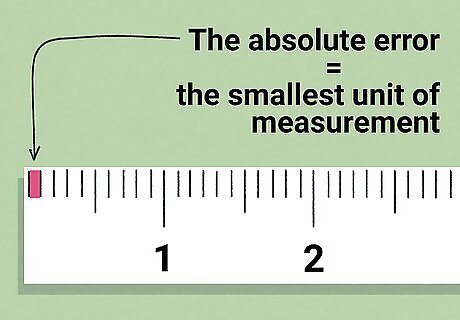
Alternatively, when measuring something, assume the absolute error to be the smallest unit of measurement at your disposal. For example, if you're measuring something with a meter stick, the smallest unit marked on the meter stick is 1 millimeter (mm). So you know that your measurement is accurate to within + or - 1 mm; your absolute error is 1 mm. This works for any measurement system. Many scientific tools, like precision droppers and measurement equipment, often has absolute error labeled on the sides as "+/- ____ "
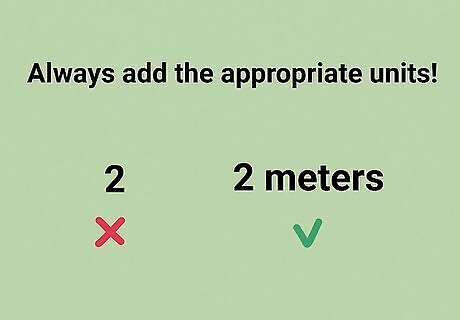
Always add the appropriate units. Say your Absolute Error was "2 meters." This tells your viewers exactly how far off your error was. But if you write that your error was simply "2," this doesn't tell your audience anything. Use the same unites as the ones in your measurements.
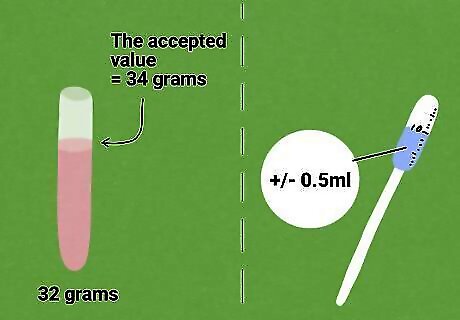
Practice with several examples. The best way to learn how to calculate error is to go ahead and calculate it. Take a stab at the following problems, then highlight the space after the colon (:) to see your answer. Jill is studying chemical reactions. After mixing and matching, her test tube contains 32 grams of substrate. The accepted value for her experiment was 34 grams. Her Absolute Error is: +/- 2 grams Clive is testing reactions in chemistry. It takes 10ml drops of water to cause a reaction, but his dropper claims it is "+/- .5ml." The Absolute Error in his measurements must be: +/- .5ml
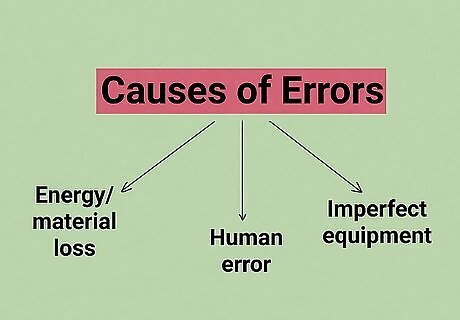
Understand what causes error, and how you can work to eliminate it. No scientific study is ever perfectly error free -- even Nobel Prize winning papers and discoveries have a margin or error attached. Still, understanding where error comes from is essential to help try and prevent it: Human error is the most common. This is from bad measurements, faulty premises, or mistakes in the lab. Incidental energy/material loss, such as the little fluid left in the beaker after pouring, changes in temperature due to the environment, etc. Imperfect equipment used either for measurement or studies, such as very small, precise measurements or burners that provide uneven heat.
Calculating Relative Error
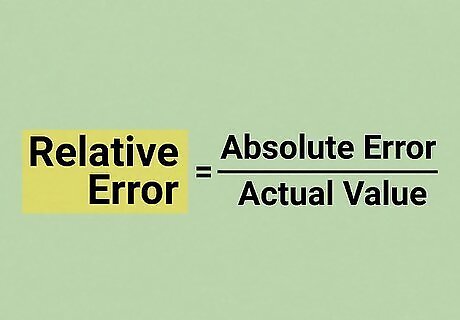
Divide the Absolute Error by the Actual Value of the item in question to get Relative Error. The result is the relative error. Note that in most cases the unit of measurement of the absolute error will be the same as the unit of measurement of the actual value, and the units will cancel each other. This leaves the relative error without any units of measurement. This simple equation tells you how far off you were in comparison to the overall measurement. A low relative error is, of course, desirable. To continue the example of measuring between two trees: Your Absolute Error was 2 feet, and the Actual Value was 20 feet. 2 f t 20 f t {\displaystyle {\frac {2ft}{20ft}}} {\frac {2ft}{20ft}} Relative Error = .1 {\displaystyle =.1} =.1
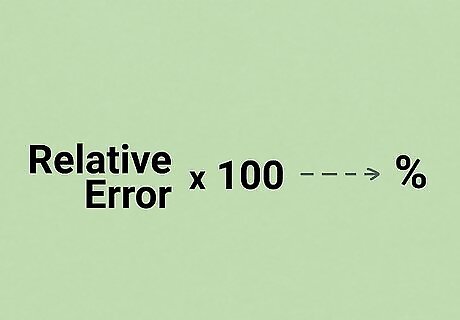
Multiply the answer by 100 to get an easier to understand percentage. Leave the relative error in fraction form, complete the division to render it in decimal form, or multiply the resulting decimal form by 100 to render your answer as a percentage. This tells you what percentage of the final measurement you messed up by. If you are measuring a 200 foot boat, and miss the measurement by 2 feet, your percentage error will be much lower than missing the 20 foot tree measurement by 2 feet. The error is a smaller percentage of the total measurement. 2 f t 20 f t = .1 {\displaystyle {\frac {2ft}{20ft}}=.1} {\frac {2ft}{20ft}}=.1 .1 ∗ 100 = 10 % {\displaystyle .1*100=10\%} .1*100=10\% Relative Error.
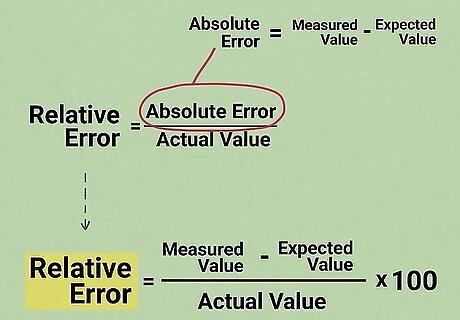
Calculate Relative Error all at once by turning the numerator (top of fraction) into your Absolute Error equation. Once you understand the difference between Absolute and Relative Error, there is really no reason to do everything all by itself. Simply substitute the equation for Absolute Error in for the actual number. Note that the vertical bars are absolute value signs, meaning anything within them must be positive. Relative Error = | M e a s u r e d − A c t u a l | A c t u a l {\displaystyle ={\frac {|\mathrm {Measured} -\mathrm {Actual} |}{\mathrm {Actual} }}} ={\frac {|{\mathrm {Measured}}-{\mathrm {Actual}}|}{{\mathrm {Actual}}}} Multiply the whole thing by 100 to get Relative Error Percentage all at once.
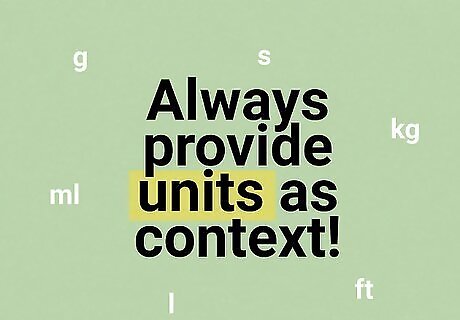
Always provide units as context. Let the audience know the units you're using for measurement. However, the relative error does not employ units of measurement. It is expressed as a fraction or a percentage, such as a relative error of 10%.













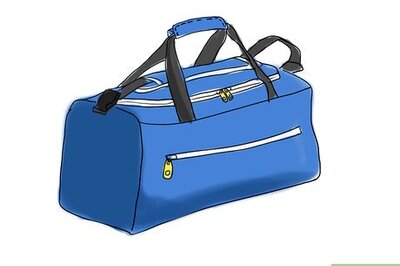


Comments
0 comment